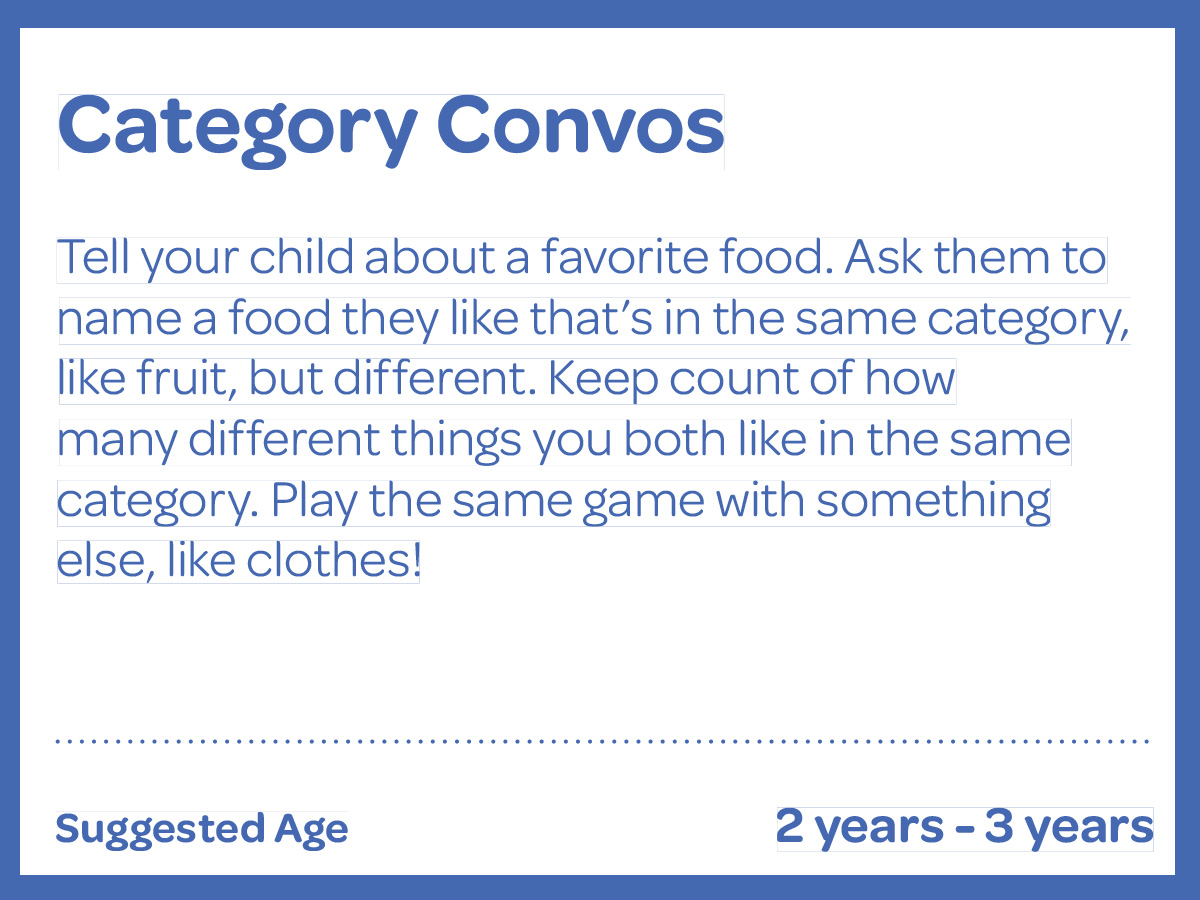Follow and Stretch Brain Builders
Vroom
September 18, 2025

There’s one word that likely comes to mind when you think of toddlers: WHY? Why is the sky blue? Why do we brush our teeth? Why do I have to go to sleep?
Constantly asking “why?” is a sign your child’s brain is growing! They are curious and want to learn all about the world around them. Vroom can help you make the most of the whys through the Brain Building Basics of Follow and Stretch.
Category Convos
Suggested Age: 2 years-3 years
Tell your child about a favorite food. Ask them to name a food they like that’s in the same category, like fruit, but different. Keep count of how many different things you both like in the same category. Play the same game with something else, like clothes!
Smile and Wink
Suggested Age: 2 years-3 years
Smile at your child and then wink at them. Repeat it several times, then encourage them to try to copy you. The smile is easy, and their wink, which may be just crinkling their eyes, will make you smile again! Take turns. Count how many smiles and winks you share.
What’s Next?
Suggested Age: 2 years-3 years
Boost your child’s independence by asking them questions instead of telling them what to do. If you’re getting ready to leave the house, instead of telling them to put shoes on, try saying something like, “I see your socks are on. What comes next”?
Use Your Words
Suggested Age: 2 years-3 years
Does your child get upset and start to cry or whine? Gently remind them to use their words to say what is bothering them or what they want. If they’re too upset to talk, try to guess what they want to say until they let you know you got it.
No Words?
Suggested Age: 2 years-3 years
You can talk to your child about anything! Use their name as you make eye contact and chat. Your attention is like a hug from the inside that helps them feel focused, calm, and settled. Pay attention to what is happening around them and talk about it.
New to You
Suggested Age: 2 years-3 years
When they are playing, help your child do things they haven’t done before. Try out the swings or the slide at a playground, or even feel the different textures on the ground. As long as they’re safe, let them try new things, with a helping hand if they need it. How do they respond? Celebrate what they say and do!
Up and Over
Suggested Age: 2 years-3 years
Ask your child to fi nd an object like a stick or rock and place it on the ground near you. Encourage them to explore different ways of moving over it: Can they jump? Hop over on just one foot? Run and then jump? Take turns jumping with them and talk together about how far you both go.
Touch Talk
Suggested Age: 2 years-3 years
Ask your child to touch the clothes you’re both wearing. Talk back and forth about how they feel. You could say, “We’re both wearing shirts. Mine is smooth and yours is wrinkled.” Take turns using as many words as you can to describe how your clothes feel.
Food Favorites
Suggested Age: 2 years-5 years
As you go shopping, point out some of your favorite foods to your child and see if they like them: “I love bananas, do you?” Then invite them to point out a favorite food. Tell them if you like it. Play back and forth as you move down the aisles.
Shopping List Scribble
Suggested Age: 2 years-3 years
Writing a shopping list? Talk with your child about what you need. Read outloud what you write down: “Milk, eggs, cereal.” Invite them to write or draw on the list too and to tell you what they’re thinking about when they make those marks on the paper.
For even more brain builders, check out Vroom’s Tip Sheet. It’s also available in Spanish!
